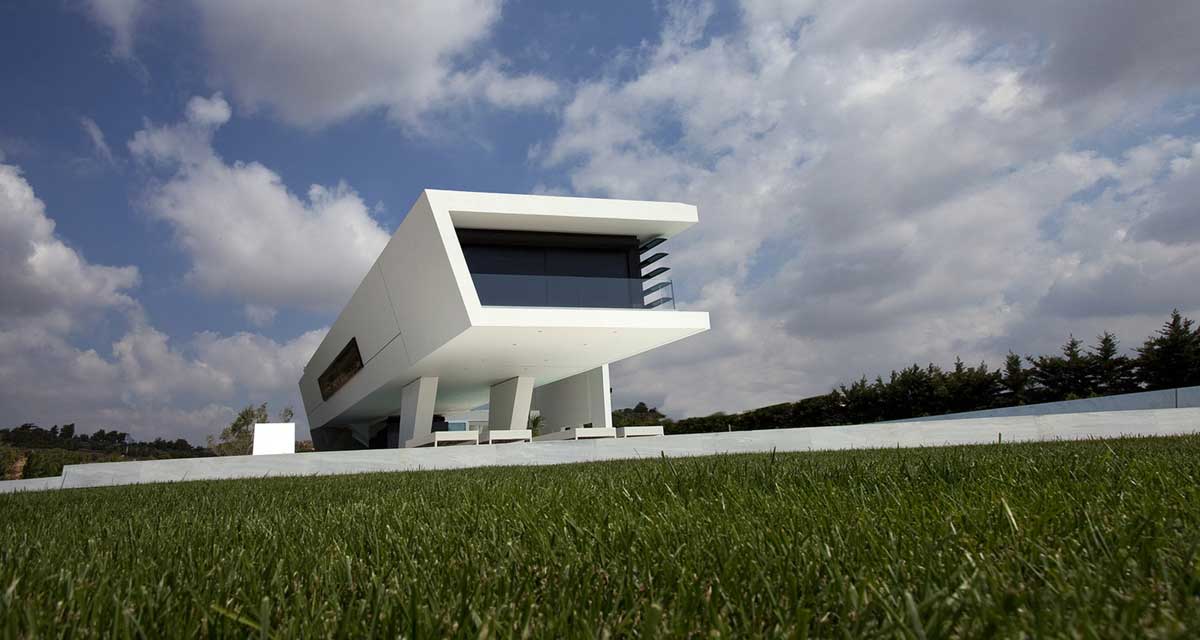In the ever-evolving world of architecture, the fusion of traditional materials with innovative designs often leads to masterpieces. Among these, the use of concrete, a material once deemed cold and industrial, has been transformed. Modern homes are now embracing curved concrete walls, which, when paired with the warmth of sunlit interiors, create spaces that are both aesthetically pleasing and functionally sound.



The Renaissance of Concrete in Modern Design
Concrete, a material that has been the backbone of construction for centuries, is experiencing a renaissance. No longer just the hidden support structure, it’s now taking center stage in home design.
The malleability of concrete allows architects to experiment, leading to the creation of curved walls that add fluidity and movement to structures. These curves break the monotony of straight lines, offering a softer, more organic feel to homes.
Beyond aesthetics, curved concrete walls also offer functional benefits. They provide enhanced structural integrity, distributing loads more evenly, especially in areas prone to natural calamities.
The thermal properties of concrete make it an excellent insulator. In homes with curved concrete walls, the interiors remain cooler in summer and warmer in winter, leading to energy efficiency.
The durability of concrete is another advantage. Homes built with this material stand the test of time, requiring minimal maintenance and offering resistance against weather elements.


Sunlit Interiors: A Dance of Light and Shadow
Natural light has the power to transform spaces. In modern homes with curved concrete walls, sunlight plays a captivating role, creating dynamic patterns as it interacts with the curves.
Large windows and strategically placed skylights ensure that interiors are bathed in sunlight. This not only reduces the reliance on artificial lighting but also creates a sense of openness and connection with the outdoors.
The interplay of light and shadow adds depth and dimension to rooms. Morning light might cast soft, elongated shadows, while the afternoon sun creates brighter, more defined patterns.
Sunlit interiors also have psychological benefits. Spaces filled with natural light are known to uplift moods, reduce stress, and improve overall well-being.
Moreover, the combination of sunlit interiors with the coolness of concrete creates a balanced ambiance. The warmth of the sun complements the cool, smooth texture of concrete, resulting in spaces that feel both cozy and modern.


Merging Form and Function
The beauty of modern architecture lies in its ability to merge form and function seamlessly. Curved concrete walls, while aesthetically pleasing, also offer functional advantages.
The curves can be used to define spaces within homes, creating natural partitions without the need for walls. This leads to open, fluid floor plans that encourage interaction and connectivity.
Acoustically, curved walls help in sound diffusion, reducing echoes and enhancing the overall sound quality within rooms.
From a sustainability perspective, using concrete as a primary building material reduces the carbon footprint. Its longevity and durability mean fewer repairs and replacements.
Ultimately, the integration of form and function results in homes that are not just visually appealing but also comfortable, sustainable, and in harmony with their surroundings.

Modern homes with curved concrete walls and sunlit interiors represent the pinnacle of architectural innovation. They showcase the potential of traditional materials like concrete when approached with creativity and vision. As we look toward the future of home design, it’s clear that the fusion of form and function, of old and new, will continue to shape spaces that inspire and delight.












